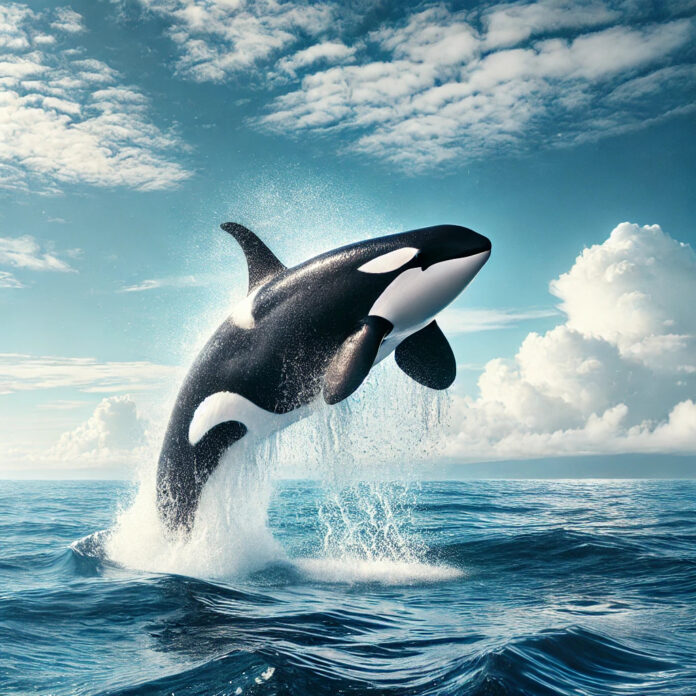orcas in Gulf of Mexico are renowned for their rich marine biodiversity, encompassing a vast array of species from tiny plankton to the majestic whale shark. Among these diverse inhabitants, the presence of orcas, or killer whales, is particularly intriguing. Known for their intelligence, social structures, and powerful hunting techniques, orcas captivate marine enthusiasts and researchers alike. This article explores the fascinating occurrence of orcas in Gulf of Mexico, delving into their behavior, habitat, and conservation efforts.
The Enigmatic Orca
orcas in Gulf of Mexico, scientifically known as Orcinus orca, are the largest members of the dolphin family. These apex predators are highly social and exhibit complex behaviors, often living in pods led by matriarchs. Their diet varies widely, ranging from fish and squid to marine mammals like seals and even other whales.
Presence in the Gulf of Mexico
While orcas in Gulf of Mexico are not the primary habitat for orcas, sightings have been recorded, sparking curiosity and excitement. These sightings are relatively rare, and the reasons behind orcas venturing into the Gulf remain a subject of study. Factors such as prey availability, migration patterns, and environmental changes might influence their presence in these waters.
Historical Sightings
Historical records and anecdotal evidence suggest that orcas have been occasional visitors to orcas in gulf of Mexico for decades. Fishermen and mariners have reported sporadic encounters, with some documenting these majestic creatures breaching the water’s surface or engaging in playful behavior. Despite the rarity of sightings, each encounter provides valuable data for understanding orca movement patterns.
Habitat and Behavior
orcas in gulf of Mexico offer a unique environment for marine species, characterized by warm waters, diverse ecosystems, and abundant prey. Orcas in this region are believed to adapt their hunting strategies to exploit the available resources. Observations indicate that they may target species such as tuna, dolphins, and other marine mammals, showcasing their adaptability and intelligence.
Social Structures
Orcas are known for their intricate social structures, and those orcas in gulf of Mexico are no exception. Pods typically consist of family groups, with strong bonds between members. These social units collaborate in hunting, communication, and caring for the young, highlighting the complexity of orca societies.
Conservation and Research Efforts
The presence of orcas in gulf of Mexico underscores the importance of marine conservation efforts. Researchers and conservationists work tirelessly to monitor orca populations, study their behavior, and ensure their protection. Understanding the impact of human activities, such as shipping and fishing, on orca habitats is crucial for developing effective conservation strategies.
Monitoring and Data Collection
Advancements in technology have enabled more effective monitoring of orcas in Gulf of Mexico. Satellite tracking, acoustic surveys, and aerial drones provide valuable insights into their movements and behaviors. This data is essential for identifying critical habitats and understanding the factors influencing their presence in the Gulf.
Threats to Orcas
Orcas face various threats, both natural and anthropogenic. orcas in Gulf of Mexico, these threats include pollution, entanglement in fishing gear, and habitat degradation. Pollution from oil spills, plastic waste, and chemical runoff can have detrimental effects on marine life, including orcas. Efforts to mitigate these threats are vital for the long-term survival of orca populations in the region.
The Role of Public Awareness

Public awareness and education play a significant role in orca conservation. By fostering a deeper understanding of these magnificent creatures, individuals can contribute to conservation efforts and advocate for the protection of marine environments. Educational programs, documentaries, and outreach initiatives help bridge the gap between scientific research and public engagement.
Community Involvement
Local communities and stakeholders are essential partners in conservation efforts. Fishermen, coastal residents, and tourism operators can all play a role in promoting sustainable practices and protecting marine habitats. Collaborative efforts between researchers, policymakers, and the public are crucial for ensuring a thriving marine ecosystem.
Conclusion
The presence of orcas in gulf of Mexico is a captivating phenomenon that highlights the intricate connections within marine ecosystems. While sightings are rare, each encounter provides valuable insights into the behavior and adaptability of these apex predators. Continued research, conservation efforts, and public awareness are essential for protecting orca populations and ensuring the health of the Gulf of Mexico’s diverse marine life. As we deepen our understanding of orcas and their environment, we take significant steps toward preserving these magnificent creatures for future generations.



